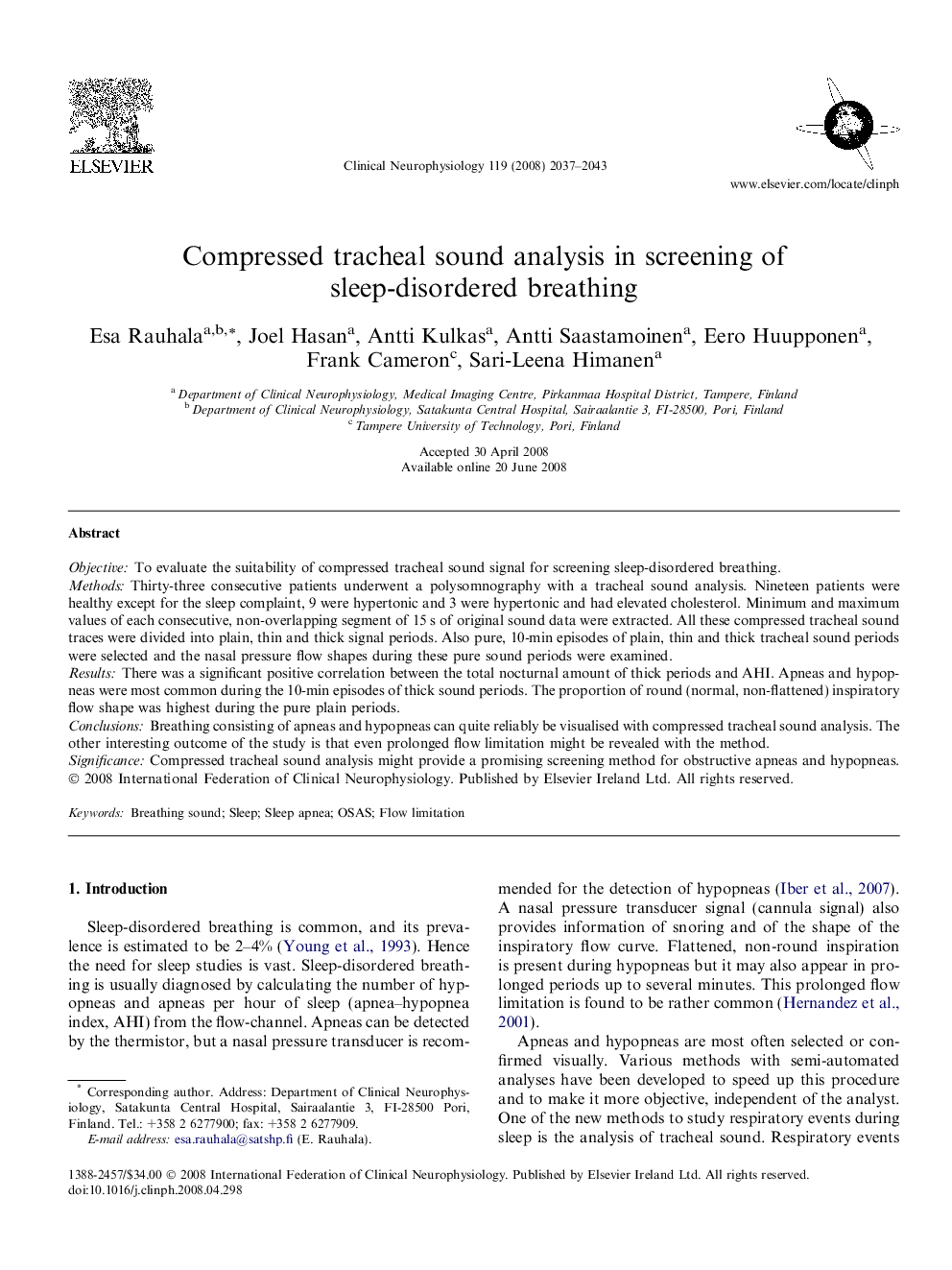| Article ID | Journal | Published Year | Pages | File Type |
|---|---|---|---|---|
| 3046910 | Clinical Neurophysiology | 2008 | 7 Pages |
ObjectiveTo evaluate the suitability of compressed tracheal sound signal for screening sleep-disordered breathing.MethodsThirty-three consecutive patients underwent a polysomnography with a tracheal sound analysis. Nineteen patients were healthy except for the sleep complaint, 9 were hypertonic and 3 were hypertonic and had elevated cholesterol. Minimum and maximum values of each consecutive, non-overlapping segment of 15 s of original sound data were extracted. All these compressed tracheal sound traces were divided into plain, thin and thick signal periods. Also pure, 10-min episodes of plain, thin and thick tracheal sound periods were selected and the nasal pressure flow shapes during these pure sound periods were examined.ResultsThere was a significant positive correlation between the total nocturnal amount of thick periods and AHI. Apneas and hypopneas were most common during the 10-min episodes of thick sound periods. The proportion of round (normal, non-flattened) inspiratory flow shape was highest during the pure plain periods.ConclusionsBreathing consisting of apneas and hypopneas can quite reliably be visualised with compressed tracheal sound analysis. The other interesting outcome of the study is that even prolonged flow limitation might be revealed with the method.SignificanceCompressed tracheal sound analysis might provide a promising screening method for obstructive apneas and hypopneas.
